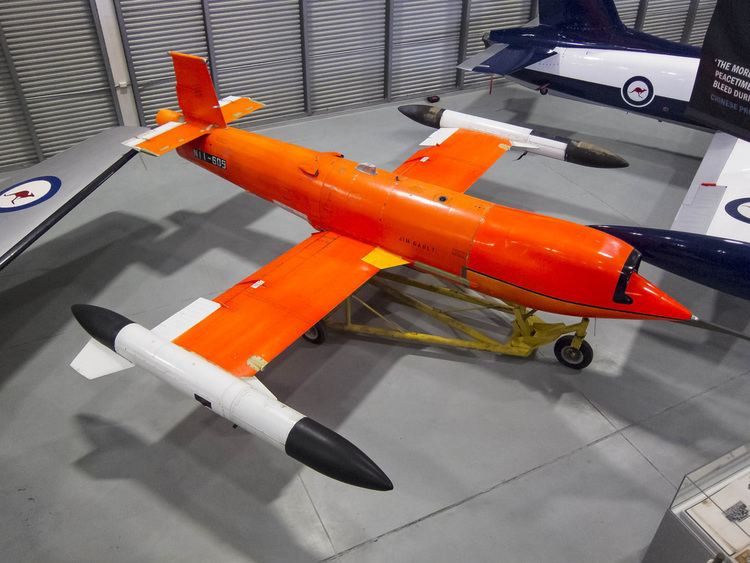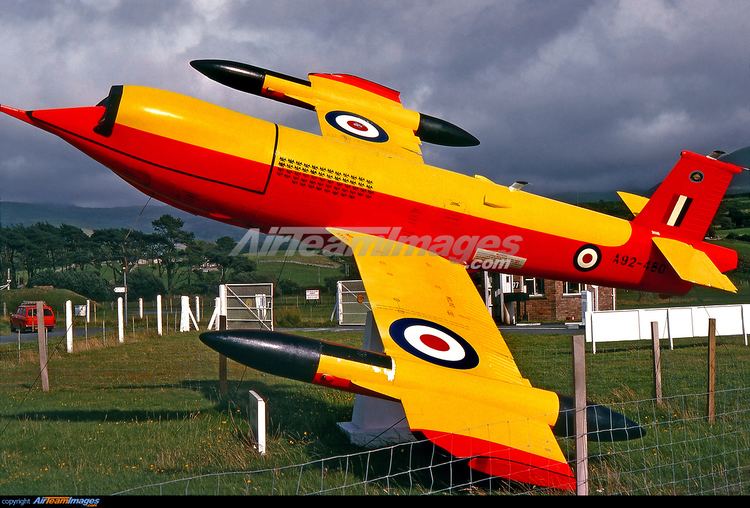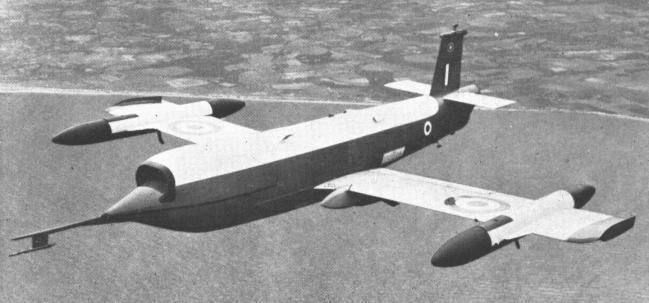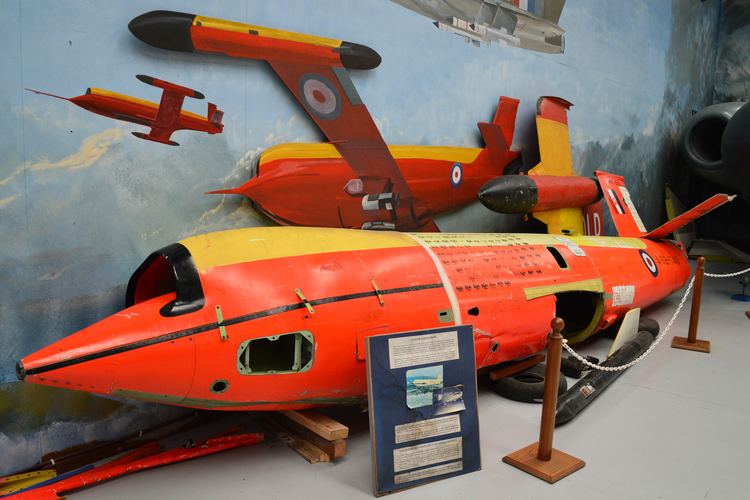Top speed 908 km/h Length 8.15 m First flight August 1952 | Wingspan 6.32 m | |
 | ||
Manufacturer | ||
The GAF Jindivik is a target drone produced by the Australian Government Aircraft Factories (GAF). The name is from an Aboriginal Australian word meaning the hunted one. Two manned prototypes, were built as GAF Pikas (Project C) as a proof of concept to test the aerodynamics, engine and radio control systems, serialled A92-1/2, 'B-1/2'. The unmanned variant was initially designated the Project B and received serials in the A93 series. Pika is an Aboriginal Australian word meaning flier.
Contents

Design and development

The Jindivik was developed as a result of a bilateral agreement between Australia and the UK regarding guided missile testing. While the UK provided the missiles, Australia provided test facilities, such as the Woomera Test Range. As a result of the talks, Australia gained the contract for developing an unmanned target aircraft to Ministry of Supply specification E.7/48. The specification called for an aircraft capable of a 15-minute sortie at 40,000 ft (12 200 m). Development began in 1948, with the first flight of the Pika in 1950 and the first flight of the Jindivik Mk.1 in August 1952.

The manned prototype, known as the Pika, had side air intakes to make room for the cockpit and because the small wheel landing gear operated from a pneumatic reservoir. The unmanned version, the Jindivik, followed the same basic form except that it had a single skid instead of an undercarriage and a dorsal air intake located where the Pika's cockpit was. The Jindivik Mk.1 was powered by an Armstrong Siddeley Adder (ASA.1) turbojet, which had been developed as a disposable engine for the project. Only 14 Mk.1s were ever made. The Mk.2 was powered by a 1,640 lb Armstrong Siddeley Viper engine. The Viper was also intended for a short lifespan – about 10 hours, but a "long life" version was also produced for conventional aircraft.

The control systems were manufactured by various firms including Elliott Brothers, GEC and McMichael, with assistance from the Royal Aircraft Establishment. Control was maintained through an autopilot that received radio commands from the ground, rather than direct flight by a ground controller. Eighteen commands could be issued to the autopilot with six further commands for the operation of other onboard equipment. The drone was launched via a self-steering trolley. At 110 knots (200 km/h; 130 mph), the drone was designed to apply its flaps, push the elevators up and release the trolley. Landing was made at 150–125 knots (278–232 km/h; 173–144 mph). Two controllers (azimuth and elevation) were used to align the drone on the runway. On landing it touched down on its skid and banking would cause the wingtip "shoes" to touch the runway, which controlled its path down the runway as it slowed.

Between 1952 and 1986, a total of 502 aircraft were produced. Examples for use in the United Kingdom were shipped by surface transport, and assembled and tested by Fairey Aviation at Hayes, Middlesex, and Manchester Airport. In 1997, the production line was re-opened to build another 15 for Britain.
Operators
Since production began, the Jindivik has been used by the Royal Australian Air Force, the Royal Australian Navy's Fleet Air Arm, and the Royal Air Force. The last Australian Jindiviks were taken out of service in the late 1990s and were replaced by the Kalkara. Most UK tests were conducted by the Royal Aircraft Establishment at their Llanbedr establishment and fired over the nearby Aberporth Airport test range in west Wales. In the UK, the drone was used in the development of the Bristol Bloodhound, English Electric Thunderbird, and Seaslug surface-to-air missiles, and the de Havilland Firestreak air-to-air missile. Small numbers of the aircraft have also been operated by both Sweden, who used the Jindivik 2, and the United States.
Variants
Specifications (Jindivik 3B – short span wings)
Data from Jane's All The World's Aircraft 1980–81
General characteristics
Performance
